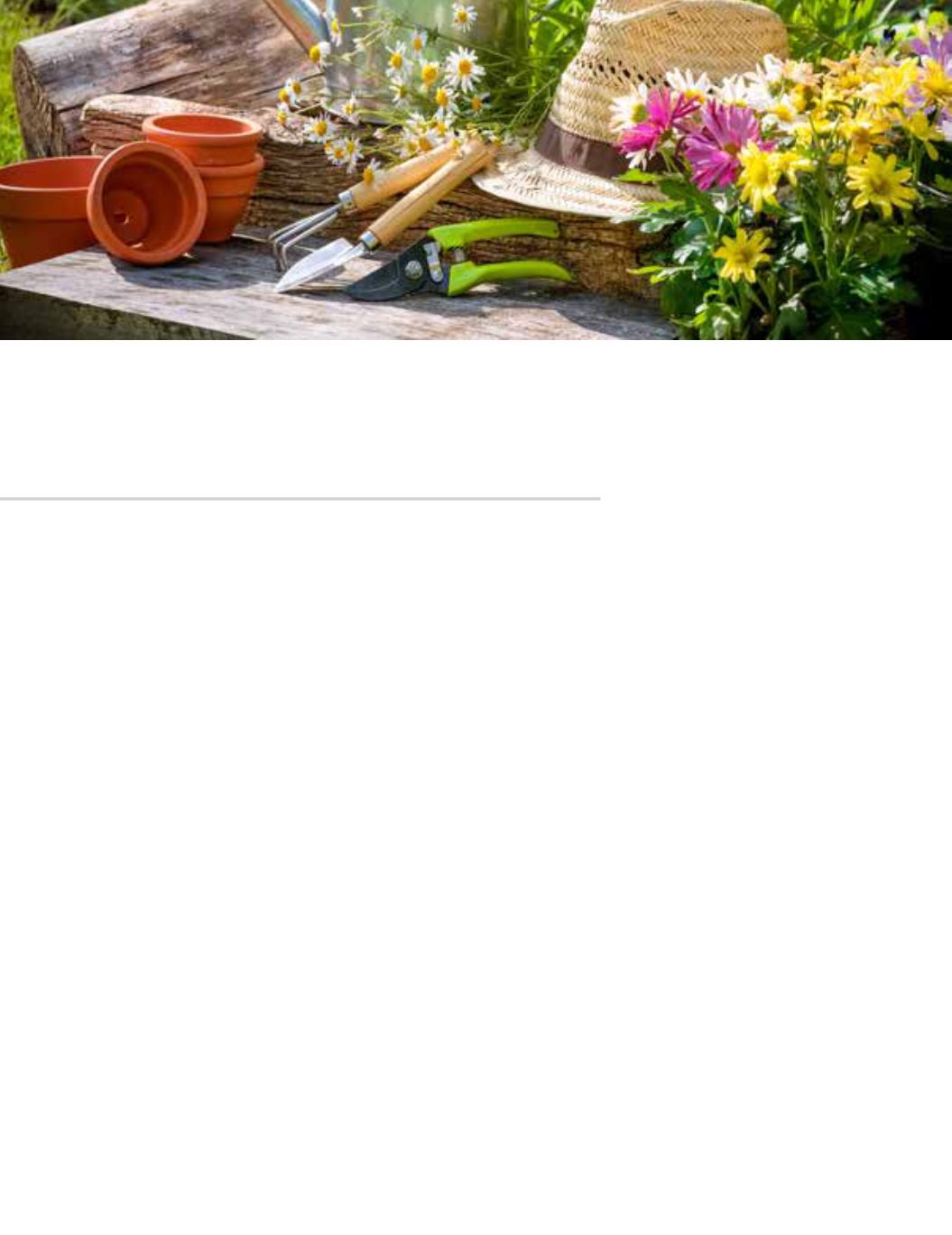
Weeder’s Digest
Going to Pot? ContainYourselves...
By Bob Siren
Container gardening is fun and allows us to garden
wherever we want. From window boxes, to hanging
baskets to various sized and shaped containers, as long as
the container holds dirt, you can grow flowers, herbs or even
fresh vegetables in just about anything. And with the help
of today’s soil and fertilizer products available at your local
garden centers, you do not need a green thumb anymore
to have success with containers, making this an excellent
method for both beginners and experienced gardeners.
It’s important to apply the basic rules of gardening to
your containers: all plants, no matter how you plant them,
require adequate levels of sunlight, water and food to thrive.
So pick your plants according to where the container will be
located. The amount of direct sunlight that spot receives will
be the guiding factor to the plants you should choose for the
container. Once you know which group of plants will work
for your spot, think about creating visual interest through a
layering effect with height, texture, and color combinations.
For ideas on plants and combinations, consult the trusted
professionals at your local garden center on the amazing
array of plant material available in our area.
Next, consider the number of plants your container
can hold comfortably through the growing season. Failing
to provide your plants enough space for roots to mature can
create competition for necessary nutrients and water, which
means more maintenance on your part. As a general rule, you
should plant no more than 1 plant per gallon of container
space.
In addition to annuals and perennials, you can also use
landscape plants and trees in containers to create beautiful
garden accents. Be mindful, however, that if you choose
trees or shrubs, even a large container may not suffice for
the potential root growth several years down the road. Be
prepared to supplement, winter over, and possibly transfer
these container plants into the ground in a few years.
Watering and fertilizing canmake or break your container,
so the soil you use is important. The use of containers on
docks here at Smith Mountain Lake is very popular, but out
of sight out of mind can create watering problems. Soil mixes
with water retention crystals are popular options allowing for
longer periods between watering. But too much water is as
harmful as too little water. So whether your container sits
on a dock or by your front door, never assume a container
needs water without checking first by putting your finger into
the soil up to your knuckle. If your finger tip feels dry, then
water. Do not let your container sit with water in its catch
basin because too much water will rot plants’ roots.
To bring out the best in your plants, you will need to feed
your containers mid-season even if you use a soil mixture that
includes a slow-release fertilizer. The plants’ rapid growth
and frequent watering will use up and wash through essential
elements, so use an additional slow release fertilizer mid
way through the season to give your containers a boost. The
plants in your container are literally stranded on an island
away from the nutrients found naturally in your garden, and
therefore need these extra supplements to thrive.
Discover Smith Mountain Lake
Summer 2014
28


